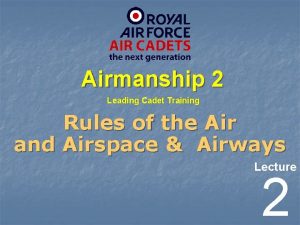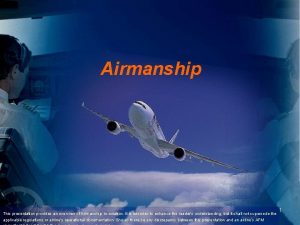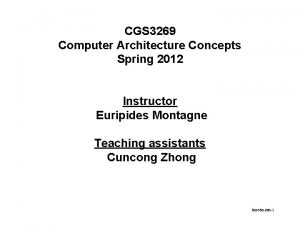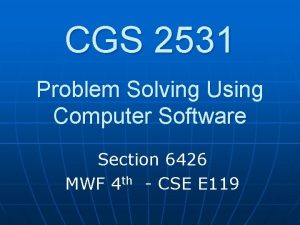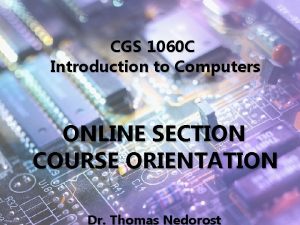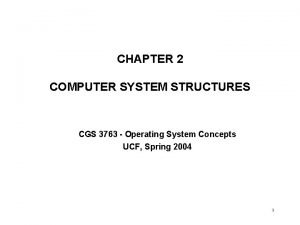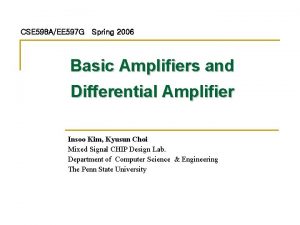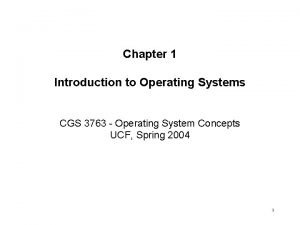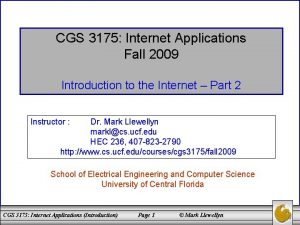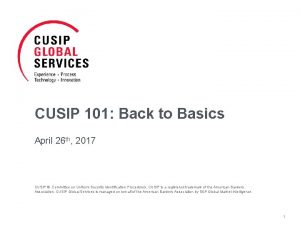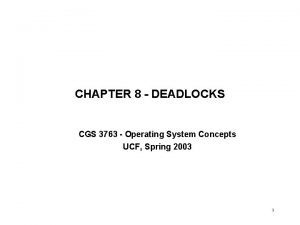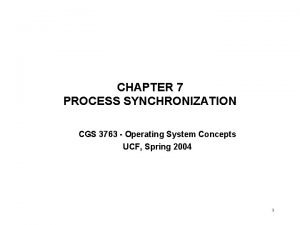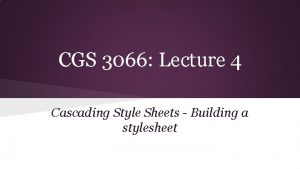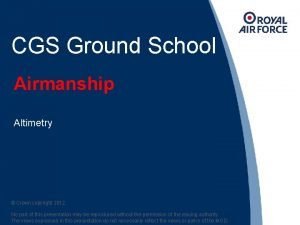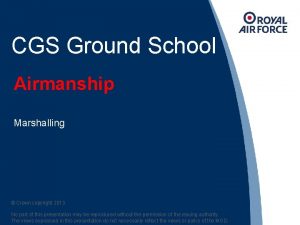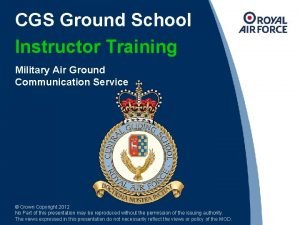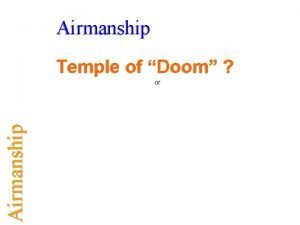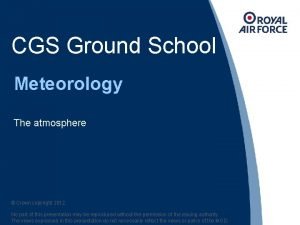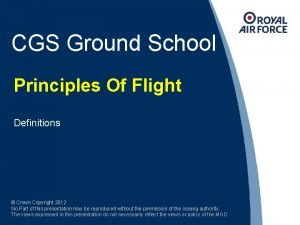CGS Ground School Airmanship Rules Of The Air

















- Slides: 17

CGS Ground School Airmanship Rules Of The Air © Crown copyright 2011. No part of this presentation may be reproduced without the permission of the issuing authority. The views expressed in this presentation do not necessarily reflect the views or policy of the MOD.

Converging Courses • Aircraft on converging courses give way to each other as shown. • Flying machines give way to – Airships – Gliders – Balloons

Converging Courses • Aircraft on converging courses give way to each other as shown. • Airships give way to – Gliders – Balloons

Converging Courses • Aircraft on converging courses give way to each other as shown. • Gliders give way to – Balloons

Approaching Head On • When two aircraft of the same class are approaching head-on or approximately head-on in the air, and there is danger of collision, each is to alter its course to the right.

Converging Courses • When two aircraft of the same class are on converging courses, and there is danger of collision, the aircraft with the other on it’s right is to give way. • An easy saying to remember is “On the right, in the right”.

Overtaking • An aircraft that is being overtaken has right of way. An aircraft overtaking another is to do so by altering its course to the right. • However… A glider overtaking another glider in the United Kingdom may alter its course to the left or right.

Proximity • An aircraft shall not be flown in such proximity to other aircraft as to create a danger of collision. • A pilot is not to formate or interfere with any aircraft without prior authorisation.

Right Hand Traffic Rule • An aircraft following a line feature on the ground is to keep the line feature on its left.

Landing • An aircraft landing or approaching to land has right of way over aircraft in flight or on the ground, provided that: – If two or more aircraft of the same category are approaching to land, the aircraft at the lower altitude has right of way. AN AIRCRAFT IS NOT TO TAKE ADVANTAGE OF THIS RULE TO CUT IN FRONT OF ANOTHER AIRCRAFT DESCENDING IN A STRAIGHT LINE TO LAND

Landing • An aircraft landing or approaching to land has right of way over aircraft in flight or on the ground, provided that: – When air traffic control has communicated an order of landing, aircraft are to approach in that order. Vigilant downwind, there is a similar type at long final, you are number 2. Roger number 2, will extend downwind.

Landing • PAN PAN, VGL 666, PARTIAL ENGINE INTEND An aircraft landing or approaching to. FAILURE, land has IMMEDIATE LANDING, right of way over aircraft in flight or on. THROUGH the JOINING RIGHT ground, provided that: BASE. – When the pilot of an aircraft is aware that another aircraft is making an emergency landing, the pilot shall give way to that aircraft.

Right Of Way On The Ground • When on the ground, the following rules apply: – Taxying aircraft and vehicles give way to aircraft being towed. – Vehicles not towing aircraft give way to taxying aircraft.

Giving Way • An aircraft required by these rules to give way is to avoid passing under or over the other aircraft, or crossing ahead of it unless well clear. • Where possible pilots giving way should indicate that the other aircraft has been seen and is being given right of way. • i. e. by an early and pronounced change of heading.

Right Of Way • An aircraft that has right of way is to maintain its course and speed unless by doing so there is a risk of collision. • In this example the aircraft on the right has right of way, unfortunately the aircraft on the left is being flown by somebody not carrying out a good lookout. As such the aircraft on the right avoids a collision.

Nothing in the previous set of rules absolves a pilot from taking all possible action to avoid a collision.

THE END Any Questions?
